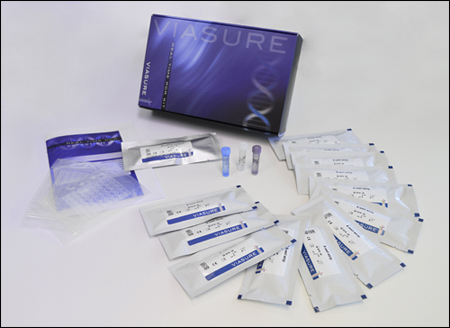
VIASURE Real Time PCR Detection Kits
Flu Typing I (H1N1 & H3N2)

Description
VIASURE Flu Typing I Real Time PCR Detection Kit is designed for the specific identification and differentiation of Influenza A (H1N1)pdm09 and H3N2 subtypes in respiratory samples from patients with signs and symptoms of respiratory infection.
This test is intended to be used as an aid in the diagnosis of Influenza A (H1N1)pdm09 and H3N2 subtypes in combination with clinical and epidemiological risk factors.
RNA is extracted from specimens, amplified using RT-PCR and detected using fluorescent reporter dye probes specific for Influenza A (H1N1)pdm09 and H3N2 subtypes.
Specifications
Information
Influenza virus is an enveloped, single stranded RNA virus that belongs to the Orthomyxoviridae family and causes the majority of viral lower respiratory tract infections. Influenza A and B are a significant cause of morbidity and mortality worldwide, considering that elderly and compromised individuals are especially at risk of developing severe illness and complications such as pneumonia. People feel some or all of these symptoms: fever or feeling feverish/chills, cough, sore throat, nasal stuffiness and discharge, myalgia, headaches, and anorexia.
The influenza viruses can be spread from person to person in two different ways: through the air (large droplets and aerosols from sneezing and coughing), and by direct or indirect contact. Influenza A viruses has been classified into subtypes based on the combinations of the envelope proteins hemagglutinin (HA) and neuraminidase (NA). Currently, Influenza A (H1N1) and Influenza A (H3N2) are the circulating seasonal Influenza A virus subtypes. This seasonal A (H1N1) virus is the same virus that caused the 2009 influenza pandemic. Influenza A (H3N2v) viruses were first detected in people in 2011, being its infections associated with prolonged exposure to pigs at agricultural fairs.
Diagnosis can be problematic, as a wide range of clinical presentation of influenza. Real-time PCR assays have been shown to be a sensitive and specific diagnostic tool for the detection of the two subtypes of Influenza A (H1N1 and H3N2) that are currently in general circulation among people.

